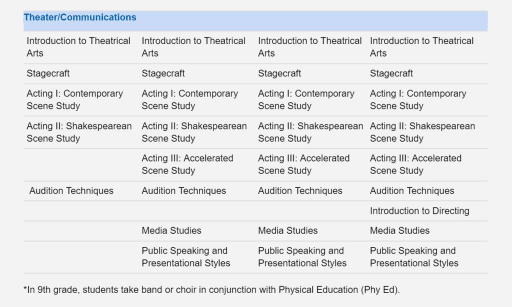Stagecrafting Tips for Public Speakers
Stagecrafting Tips are essential for public speakers to create an engaging and impactful presentation.

Credit: www.amazon.com
Mastering Body Language
Stagecrafting goes beyond simply memorizing lines and delivering them with confidence. It’s about creating a captivating presence on stage that engages the audience from the moment you step into the spotlight. One of the most crucial elements of stagecrafting is mastering body language. Non-verbal communication, posture, gestures, and facial expressions all play a vital role in conveying your message effectively. In this article, we will explore some valuable tips to help public speakers elevate their body language game.
Understanding Non-verbal Communication
Non-verbal communication is the art of conveying messages without uttering a single word. It includes elements such as body movements, facial expressions, and eye contact. Understanding the power of non-verbal cues is key to becoming a skilled public speaker.
Improving Posture And Gestures
A confident posture improves both your physical and mental state on stage. Stand tall, maintaining a straight spine, and avoid slouching. Work on engaging your core to project poise and authority. Gestures play a crucial role in engaging the audience and adding emphasis to your words. Use open and expressive hand movements to create a dynamic connection with your audience.
Using Facial Expressions Effectively
The human face can convey a myriad of emotions and intentions. Effective use of facial expressions can bring depth and authenticity to your performance. Practice using your facial muscles to portray different emotions and maintain eye contact with your audience. A genuine smile can instantly create a warm connection, while a raised eyebrow or a furrowed forehead can add intrigue and interest.

Credit: www.thenation.com
Enhancing Vocal Delivery
When it comes to public speaking, enhancing your vocal delivery is essential for captivating your audience and leaving a lasting impact. To engage your listeners effectively, you need to master the art of controlling pitch and tone, utilizing pauses and pace, and adding emphasis and intonation.
Controlling Pitch And Tone
Controlling pitch and tone is crucial for conveying your message with clarity and emotion. When speaking, vary your pitch to prevent monotony and captivate your audience’s attention. Higher pitches can denote excitement or urgency, while lower pitches convey a sense of seriousness or calmness. Moreover, paying attention to your tone helps you deliver the intended emotion behind your words. A friendly and warm tone can enhance your connection with the audience, while a confident and authoritative tone can establish trust and credibility.
Utilizing Pauses And Pace
Mastering the strategic use of pauses and pace can significantly impact how your message is received. Pauses can create anticipation, emphasize key points, and give your audience a moment to process information. They also help to regulate your speech pace and prevent rushing. On the other hand, adjusting your pace can add dramatic effect, build suspense, or convey a sense of urgency. However, be mindful to avoid speaking too slowly, as it may bore your listeners.
Adding Emphasis And Intonation
Emphasizing certain words or phrases through vocal emphasis and intonation can emphasize their importance and draw the audience’s attention. By placing emphasis on key points, you can highlight their significance and make them memorable. Intonation, on the other hand, refers to the melodic pattern of your speech, such as rising or falling tones. Utilizing intonation can make your delivery more dynamic and engaging, helping to convey different emotions and expressions effectively.
In conclusion, enhancing your vocal delivery skills as a public speaker is vital for delivering a compelling and engaging presentation. By controlling pitch and tone, utilizing pauses and pace, and adding emphasis and intonation, you can captivate your audience, convey your message effectively, and leave a lasting impact.
Utilizing Props And Visual Aids
When it comes to public speaking, the use of props and visual aids can be a powerful tool to captivate your audience and enhance the impact of your message. Props and visuals not only add a visual element to your presentation but also help in conveying complex information in an easy-to-understand manner. In this section, we will explore some stagecrafting tips for public speakers on how to effectively utilize props and visual aids to create a memorable and engaging presentation.
Selecting Relevant Props
When selecting props for your presentation, it is crucial to choose items that are relevant to your topic and can help reinforce your main points. Choose props that are visually appealing and will grab the attention of your audience. For example, if you are presenting on the benefits of healthy eating, you could bring in samples of nutritious food or a colorful display of fruits and vegetables. By selecting relevant props, you can make your message more tangible and relatable to your audience.
Creating Impactful Visual Aids
Visual aids are a valuable tool for enhancing the impact of your speech. Create visual aids that are clear, concise, and visually appealing, using elements like charts, graphs, images, or videos. These aids should complement your speech and help illustrate your points effectively. For instance, if you are presenting data on the growth of your company, you can use a graph or chart to visually represent the statistics. Keep in mind that your visual aids should be easy to understand at a glance and should not overwhelm or distract the audience from your main message.
Incorporating Props And Visuals Seamlessly
Once you have selected the relevant props and created impactful visual aids, it is essential to incorporate them seamlessly into your presentation. Use props and visuals strategically throughout your speech to support key points, but avoid overusing them. Your props should enhance your message, not overshadow it. Ensure that each prop or visual aid is introduced in a way that seamlessly transitions from one point to another. Practice your transitions beforehand to ensure a smooth flow and maintain the audience’s focus.
By utilizing props and visual aids effectively, you can create a dynamic and engaging presentation that leaves a lasting impression on your audience. Remember, the key is to select props that are relevant, create impactful visuals, and incorporate them seamlessly into your speech. With these stagecrafting tips, you can take your public speaking skills to the next level.
Managing Stage Presence
When delivering a speech, it’s not just about what you say, but how you present yourself. Managing stage presence plays a crucial role in captivating your audience and effectively delivering your message. In this section, we will explore three essential aspects that will help you enhance your stage presence as a public speaker: engaging with the audience, building confidence on stage, and handling stage fright.
Engaging With The Audience
Engaging with your audience is the key to keeping them attentive and connected throughout your speech. You want to establish a rapport with your listeners and make them feel involved. Here are a few ways to achieve this:
- Maintain eye contact: Look directly into the eyes of your audience members to create a personal connection and show that you value their presence.
- Use inclusive language: Address your audience collectively by using pronouns like “we” and “us.” This creates a sense of unity and implies that you are all in it together.
- Incorporate interactive elements: Include activities, questions, or polls throughout your speech to encourage participation and engagement from your audience.
Building Confidence On Stage
Confidence is the cornerstone of a compelling stage presence. When you exude confidence, your audience is more likely to trust and believe in your message. Here are some tips to help you build confidence on stage:
- Practice, practice, practice: Rehearse your speech multiple times to ensure you are confident in the material. This will help you feel more comfortable delivering it.
- Know your audience: Research your audience beforehand so you can tailor your speech to their needs and interests. This knowledge will boost your confidence, knowing you are delivering something valuable.
- Utilize positive self-talk: Replace negative thoughts with positive affirmations to boost your confidence. Remind yourself of your strengths and previous successful speaking experiences.
Handling Stage Fright
Stage fright is something that even experienced speakers face. However, with proper techniques, you can manage and overcome it:
- Deep breathing: Practice deep breathing exercises to calm your nerves before stepping onto the stage. This will help you relax and center your focus.
- Visualize success: Imagine yourself delivering a successful speech and receiving positive feedback from the audience. Visualizations can help alleviate anxiety and boost your confidence.
- Start with a strong opening: Begin your speech with a powerful and engaging opening. A strong start will help you overcome initial nerves and set the tone for the rest of your presentation.

Credit: www.youtube.com
Frequently Asked Questions For Stagecrafting Tips For Public Speakers
What Are The 5 Basic Public Speaking Tips?
The 5 basic public speaking tips include: 1. Speak clearly and concisely, using short sentences. 2. Maintain an engaging and confident presence. 3. Use visual aids to enhance your message. 4. Practice and prepare thoroughly. 5. Connect with your audience through eye contact and body language.
What Are The 5 Ways To Become A Better Public Speaker?
To become a better public speaker: 1. Practice regularly. 2. Focus on body language and gestures. 3. Use visual aids effectively. 4. Engage with the audience by asking questions or sharing stories. 5. Seek feedback and learn from it.
How Can I Be A Public Speaker?
To become a public speaker, follow these steps: 1. Develop your speaking skills through practice and training. 2. Identify your niche or expertise to target specific audiences. 3. Build your credibility by gaining experience and sharing your knowledge through presentations or workshops.
4. Promote yourself through social media, networking, and online platforms. 5. Continuously improve by seeking feedback, attending seminars, and staying updated in your field.
How Do You Get Stage Presence In Public Speaking?
To get stage presence in public speaking, maintain eye contact, use confident body language, speak clearly and with conviction, engage the audience through storytelling or interactive activities, and practice regularly. These techniques will enhance your presence and connect with the audience effectively.
What Are Some Essential Stagecrafting Tips For Public Speakers?
Effective stagecrafting tips for public speakers include practicing body language, using visual aids, and maintaining eye contact.
Conclusion
Implementing effective stagecraft techniques can greatly enhance the impact of your public speaking. By paying attention to your body language, vocal delivery, and use of visuals, you can captivate your audience and leave a lasting impression. Remember to practice and refine your skills regularly to continuously improve as a speaker.
So, apply these stagecrafting tips and take your public speaking to the next level.




